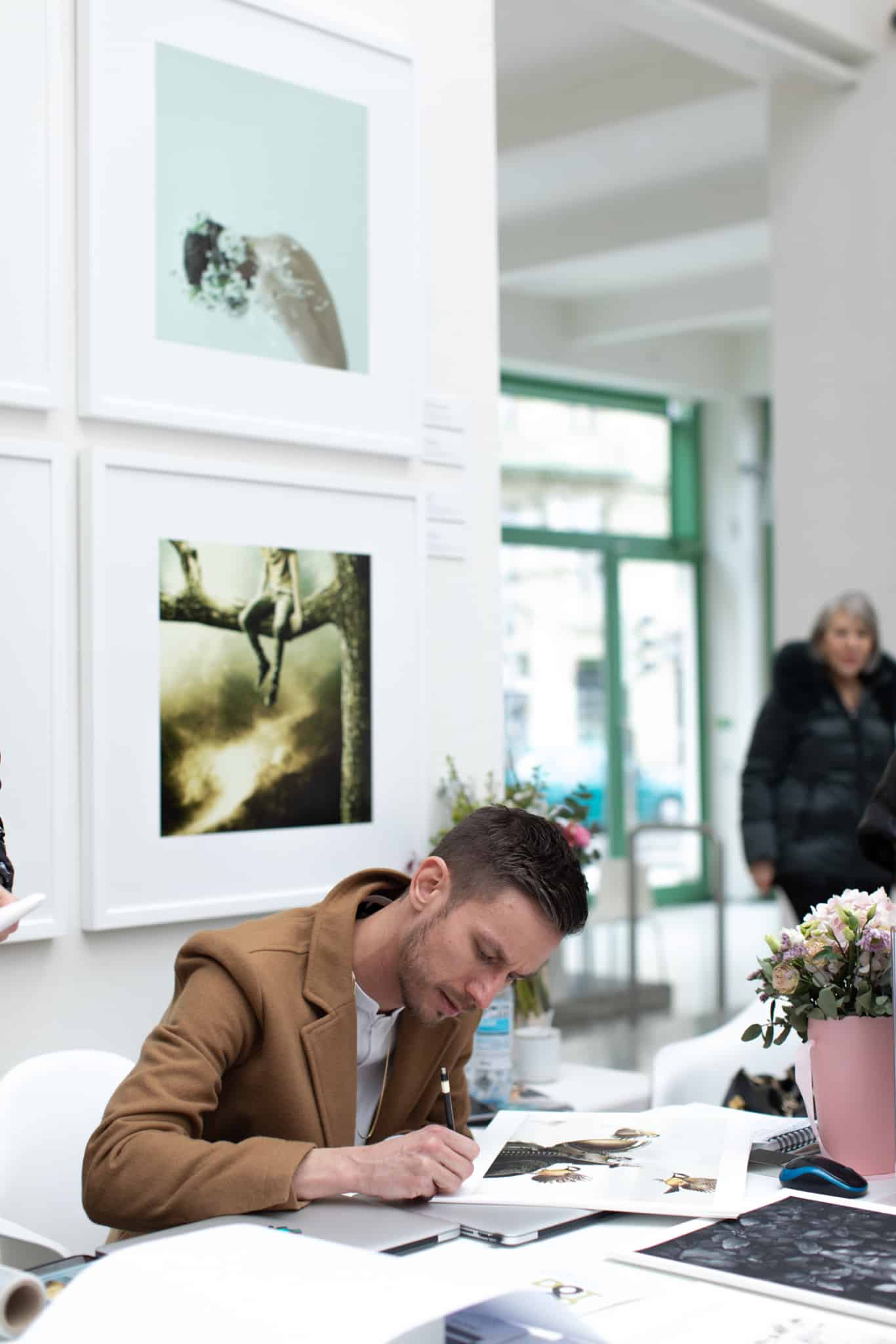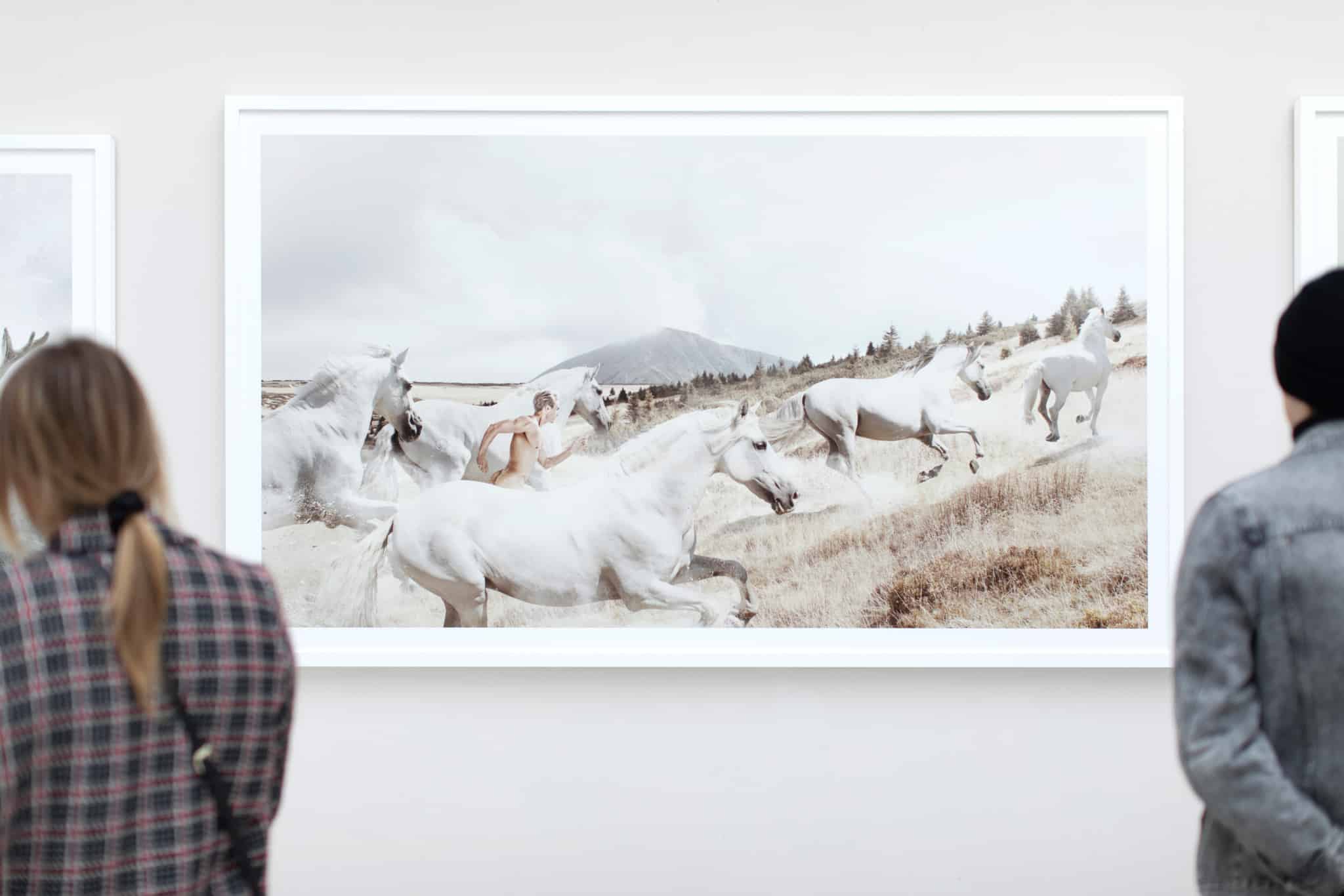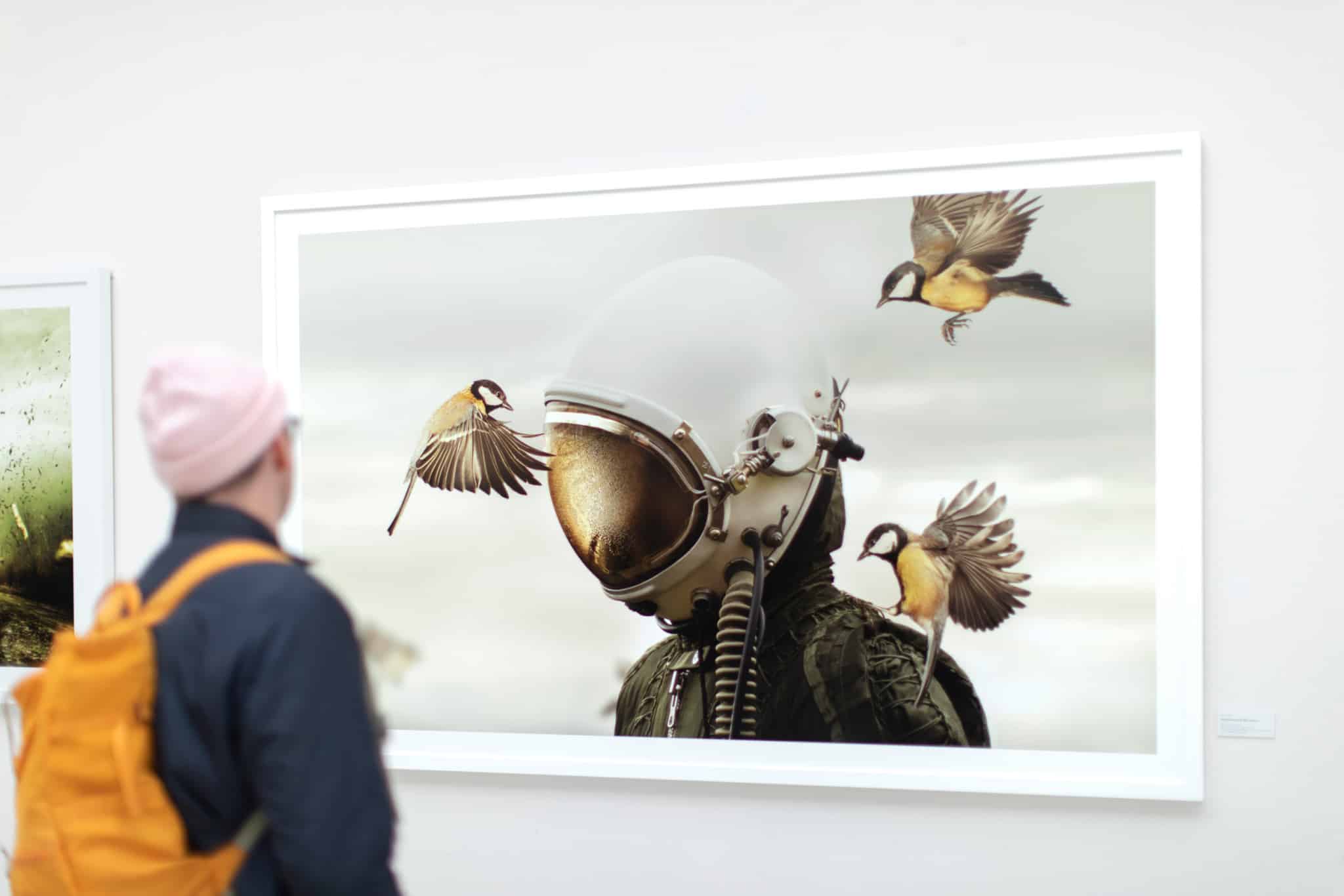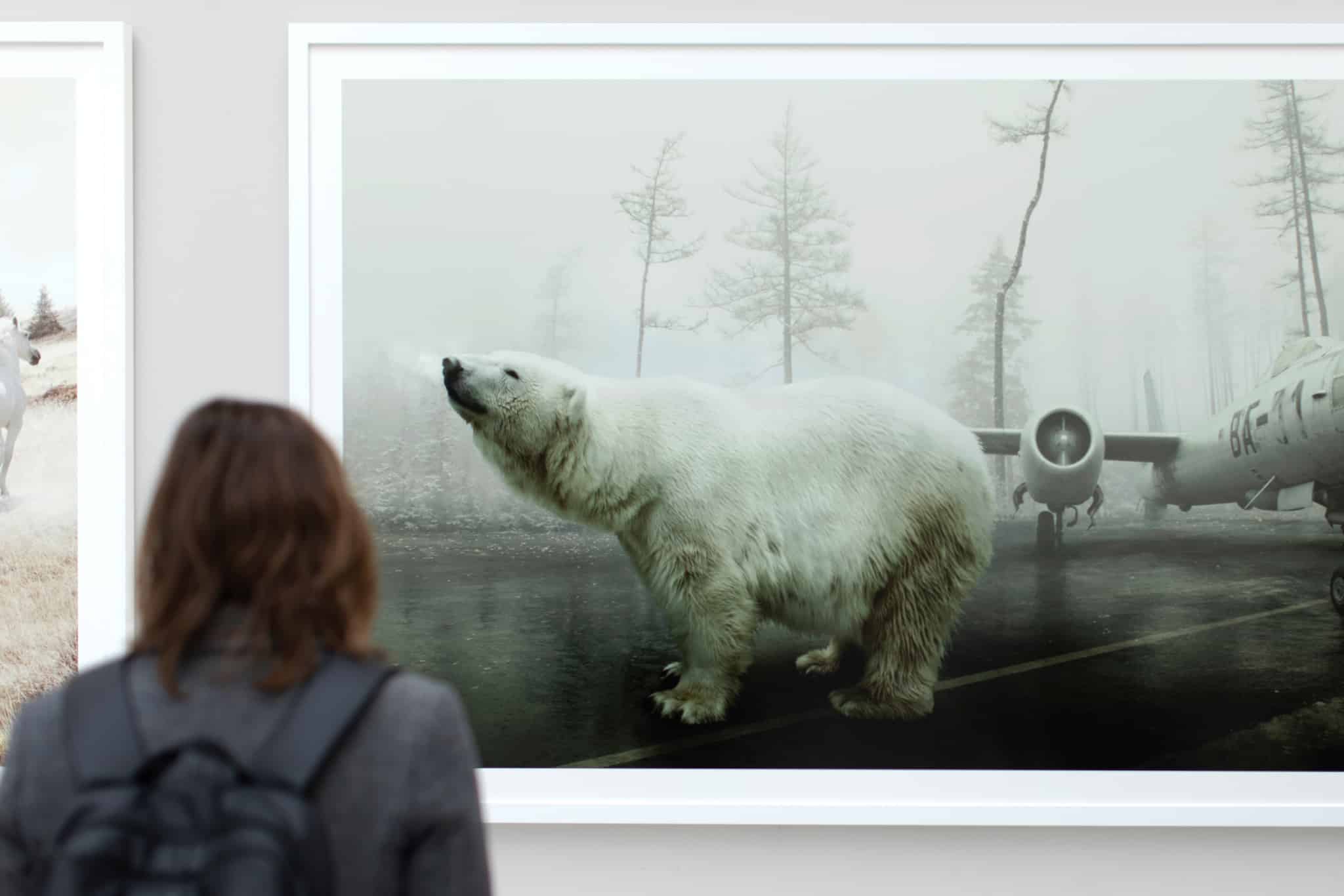Martin Stranka: I’ve never fallen for idols, I’ve always managed to take my fulfillment and fresh air from my own internal world.

A phenomenal Czech photographer, and a winner of numerous photography awards around the globe. Martin Stranka recently held the grand opening for his retrospective exhibition “Dechem” (“With Breath”) at Prague’s Manes gallery. And we ventured out to him for a chat about his work, his current exhibition, and his future plans. Read our interview with this young artist.
We spoke with Martin right at the Manes gallery where his exhibition is on display. This was the best place that we could have chosen, because Martin was there every day from morning to night—he really gave this exhibition his all. We sat down with this smiling young artist amid his exhibited photos, and I turned on my voice recorder. We briefly cleared up the subject of our interview—it would be about art, not the grim current events—and we could start.
Martin, you’ve chosen a quite fresh approach here—you yourself are part of your exhibition, and you’re there in the room throughout it. I’d like to ask whether you’ve collected any interesting feedback from your visitors, food for thought, inspiration, etc., during this exhibition?
Definitely. The idea was: for the last 14 years we’ve mostly been putting on exhibitions in other countries, and we were getting asked more and more when we would do something here in Czechia. So I decided I’d put on my biggest exhibition right here at home. And since my audience has grown a lot over these last 15 years, and it’s a considerable number of people, there definitely is a point in my being here each day.
I myself always say that if I were ever to go to an exhibition and have the actual artist there—even if they didn’t speak with me or intervene in the gallery space—that definitely would have added value for me. The reason was like that. And the feedback has absolutely been positive. People are amazed and ask me “you’re still here?!” and I say, “yes, still!” And that’s great.
You’ve had lots of exhibitions abroad—can you even count them?
I have a feeling it’s around 95, maybe creeping up on a hundred. Maybe that hundred.
So this exhibition might be a celebration of that number?
That’s right. And maybe it’s partly due to that 100 on the horizon that I took a retrospective approach with this domestic exhibition. An imagined “top 100.”
When you were arranging this Czech exhibition, in light of your experience with exhibitions abroad, did you notice any area where preparing it was tougher than it would be abroad? Or on the contrary easier? Have you run into any Czech specifics here?
I wouldn’t like to set sail onto negative waters, but I would like to be sincere. It’s difficult to find support here for a thing where people nod that they like it, but you need some help from them—finances, barter, or et cetera. This area that’s everyday and much easier abroad is a bit of a problem here. I think we still have a lot to learn here when it comes to our relationship with art and support for the arts. We’ve got a long way to run before we get to a generation that might have a slightly different relationship towards supporting art.
It’s not for nothing that they say you can tell how developed a state or nation is by their relationship towards the arts. That’s the biggest difference in my opinion. But I definitely can’t say it’s downright bad here, definitely not, the situation is improving a lot. But in light of the situation, we went against the grain of that a bit and arranged most things ourselves.
What platform would you say is the primary one for presenting your work and communicating with your audience? Is it more a digital route, the web, social networks, or do you think of yourself as a gallery artist who feels most at home right here, in a gallery environment?
I think they aren’t mutually exclusive. It’s completely normal today to create a work entirely traditionally and then put it up on your site; today social networks are… I’m not saying a necessity, but definitely a tool that can help you greatly to present yourself. And that whole process ends where else than in the gallery, with collectors, or at home on clients’ walls.
A presentation at a gallery is 100% much nicer. Photos belong on paper.
So it’s likely not “either or,” I myself use every possibility for self-presentation, and each one has its advantages and disadvantages. But naturally the very best presentation is indeed at a gallery, where works take on the highest emotional value and intensity. And everyone who’s known these photos for, say, ten years says at the exhibition that seeing that big two-meter print is a completely new and breathtaking experience. So a presentation at a gallery is much nicer, that’s 100%, definitely. Photos belong on paper.
I agree. And I know what you’re talking about, the same thing happened to me today as I was browsing the gallery—even though I know these photos, I know their “content,” contact with their physical form was quite a bit more of an intense experience, and the pictures take on an entirely new dimension.
Absolutely!
Taking a bit of a different tack here—do you ever run into situations, and now I might be talking more about the Czech environment, where people tell you “but you’re not a photographer”? That there’s so much post-production in your works that some people consider it to be more graphic arts, or some form of visual digital art? I have a sneaking feeling there are still a lot of purists here who insist a photo is solely a causal record of reality, and any sort of adjustments robs it of the status of being a photo.
Yes, it’s as you say. Here in Czechia nobody’s blazed the trail before me around artistic photos like these. And in general there’s a large gap here—which I don’t understand much. We’ve got old standbys who are now in, say, their sixties, seventies—Tono Stano, Ivan Pinkava, Robert Vano… And then nothing; a gap of maybe ten or twenty years, if not thirty. And then when people come here, they tell me this exhibition took their breath away. I have a really large number of clients and collectors from the Czech Republic. So there is a hunger for this genre, people desire it, want it, give it the nod, but galleries don’t know what to do with it, in my opinion.
Art photos are an entirely normal thing abroad. And when people come up and discuss if it’s a photo or not… I’ll be honest, I’m a bit of a humanitarian, I like people a lot, I love talking to them, and I’m greatly humbled by them, but I no longer like debating on if it’s a photo or not. This is, to put it politely, more about people’s lack of knowledge. Photography itself—like, say, sculpture or painting—has many subcategories, and it uses a vast number of tools.
It’s not a document; it’s my own reality. I approach it as a canvas, create “something” from nothing, and it’s all the same to me whether it’s from one shot or one hundred.
“Art photo” is also a typical category in the major global photography contests, and it’s one that leaves room for post-production. But I don’t actually hold it against people—it may just be curiosity and their exploration of whether it is or isn’t a photo. I answer “yes, it’s a photo, this photo genre, art photos, allows for this specific style of work.” It’s not a document; it’s my own reality. I approach it as a canvas, create “something” from nothing, and it’s all the same to me whether it’s from one shot or one hundred.
It seems perhaps a bit ironic to me that in the land of Jaromír Funke, František Drtikol, etc., these things aren’t considered a matter of course even today, and people still haven’t taken it all to heart…
Not everyone has that knowledge, people sadly don’t make the connection. I still have a tendency to sort of do awareness raising and explain that it was such people as Picasso and Braque who brought collage as an artistic technique into the public consciousness, but today people hear “post-production” and they think it’s some sort of lie, a fiction, and so on. But they don’t comprehend that it’s a means of expression and a legitimate artistic instrument. Even in the past, photographs were developed in darkrooms, they did experiments, created double exposures for example…
Computers are just a new tool; some time from now, nobody will be taken aback anymore. It’s simply reaching our country a bit slowly. And that is simultaneously the precise answer to a question that I hear frequently—why am I far more successful abroad than at home? It’s precisely because of this. How people here are just starting to accept and grasp this approach and are building a relationship towards it.
Some internal need forces me to create-–not any rational considerations that I should or shouldn’tt do something.
But in the first part of the exhibition, we can find a somewhat more traditional photographic genre—portraits. That’s fairly new for you; how did you get into taking portraits? What was the original impulse that led you to decide to for them?
It wasn’t even so much about wanting to try something new. How it always is with me is that some internal need forces me to create—not any rational considerations that I should or shouldn’t do something. It’s more that I’ve met a lot of inspiring, and often well-known, people.
Half the people in the portraits I’m exhibiting are completely unknown to the public—they’re my close friends. I just had the feeling as a photographer that I needed to record them somehow. Right from the first portrait, I knew that this is a very meaningful project for me—and this exhibition here at Manes is its first.
Are you tempted by any other photographic genres? Or some entirely different form of art? I wondered, when I saw those small bronze sculpture installations also on exhibit here—are they your work too?
(Laughs) Yes, when we started our work on this exhibition, I knew a huge amount of more-or-less office work awaited me, and I also knew it would get me down. So I told myself I’d try something like this to spice things up. And we decided to create this sort of spatial installation early on, already while working on the exhibition.
It’s actually an analogy for my photo Dreamers and Warriors, which everyone has already seen, and I decided I would (literally!) recast it into an installation like this, and these sculptures were born. It was more a sort of experiment. I’m still a photographer of course, I just enjoy playing with shapes on this.
You’re releasing a new book as well on the occasion of this exhibition. What was your guideline when picking photos for it?
Actually it contains all of the photos on exhibit here. It’s a traditional exhibition catalogue, but I don’t like what I call “soft catalogues.” I enjoy books. And this is my biggest book in terms of both the photo count and the contents. And choosing the photos was easy—the idea is a retrospective and a selection of my best. It’s my subjective selection of what has the highest testimonial value for me personally. That was the key.
And how about your inspiration? Is there someone whose photographic work you enjoy right now? Is there someone like that?
I don’t know if it’s a mistake or not, but I generally have really rarely fallen for any kind of idols. I feel like my own internal world has always managed to fulfill me and refresh me enough on its own. But I guess I could find someone, for example I admire the Dutch photographer Erwin Olaf to this day. He’s about seventy, an artist with amazing works, beautiful and modern things—from collages to portraits. His works contain some amazing narrative value.
I generally have really rarely fallen for any kind of idols. I feel like my own internal world has always managed to fulfill me and refresh me enough on its own.
What’s after the end of this exhibition? What do you have planned? Other exhibitions and books, or is some rest time awaiting you?
Right now we’re negotiating an extension of the exhibition here, maybe at least until April. There truly is a strong interest in it, but in light of what’s going on out there right now, we may have to close the exhibition. At the moment, nobody knows what will happen. (Editor’s note: We held interview on March 12th, 2020, right when the Czech government was discussing the introduction of exceptional measures to prevent the spread of the coronavirus.)
But a solo exhibition in Orlando, Florida is coming up in July, so, another exhibition, definitely. And after that, traveling around America, collecting lots of material, photographing new things. So, as long as the situation develops well and the chaos outside calms down by then, those are my next plans.




